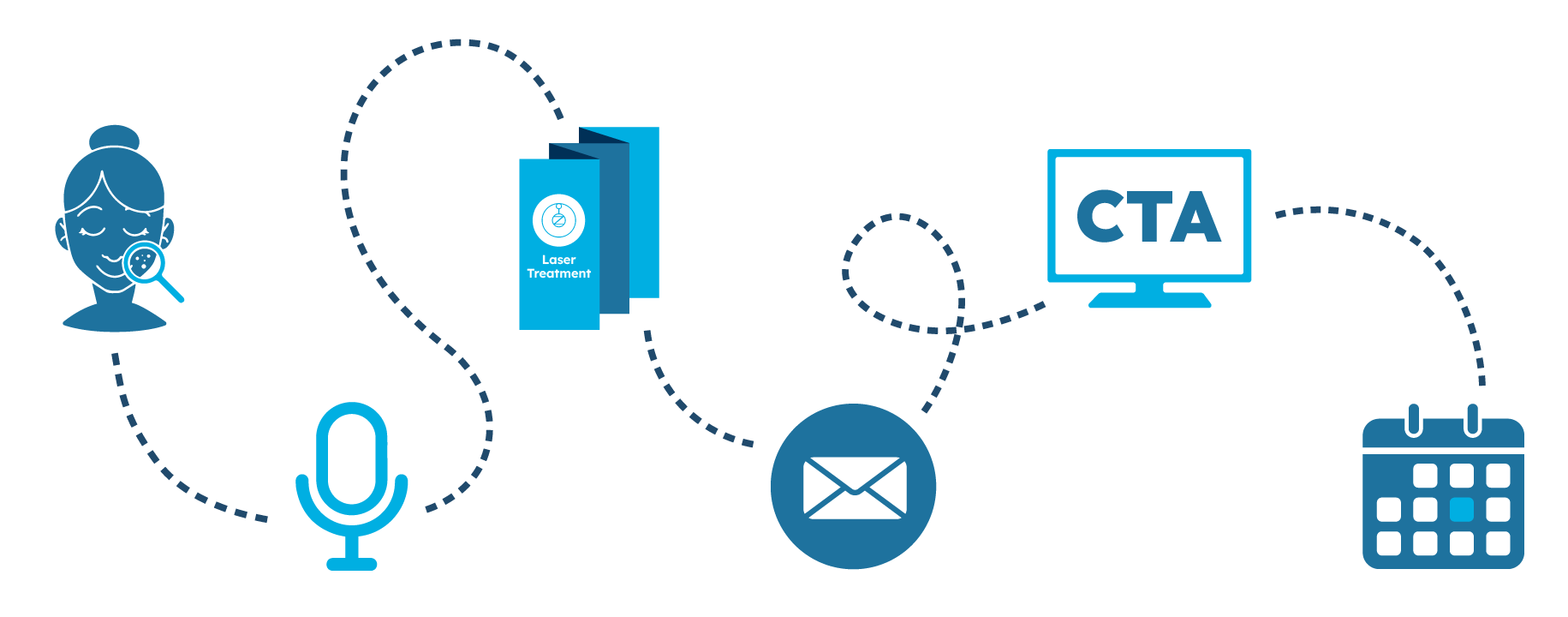As the healthcare industry moves towards a more consumer-centric ecosystem, the need to understand and engage with patients on their terms becomes more critical than ever. With a variety of marketing channels at patients’ disposal, you need to pinpoint where your efforts are making the most impact. This is where attribution models in healthcare come in, helping you understand which touchpoints or marketing channels should receive credit for a conversion.
Just like a complex story, each patient’s journey is unique and filled with different experiences and touchpoints. Understanding this journey isn’t just about figuring out the ending, it’s about appreciating each chapter and how it contributes to the overall narrative. With attribution models in healthcare, you can understand the intricate path that a potential patient takes, from their very first interaction with your brand to the final, decisive action of booking an appointment at your healthcare organization.
The strength of marketing attribution lies in its ability to provide valuable insights into the effectiveness of various marketing channels. For example, it may reveal that informative blog posts are fantastic for initial patient engagement, while targeted ads prove effective for securing appointments. This way, you can gain a clearer understanding of demand generation and the strategies that initially catch a potential patient’s attention as well as demand capture and the tactics that convert that interest into action.
With these insights, you can do more than just retrospectively analyze patient behavior. You can proactively optimize your marketing campaigns and allocate budgets more wisely. If a particular channel excels at engaging new patients, it might be worth a greater investment. At the same time, a different channel that nudges patients toward booking appointments could be invaluable for driving conversions.
In other words, attribution models in healthcare aren’t just about crediting a successful patient conversion to a particular marketing effort. It’s about applying different marketing attribution types, understanding the complex web of interactions that lead to success, highlighting areas for improvement, and strategically reallocating resources for future campaigns. In turn, you can deliver more personalized patient experiences, increase your marketing efficiency, and ultimately, drive better healthcare outcomes.
How to Determine Credit in Different Attribution Models in Healthcare Marketing
Different attribution models in healthcare offer different perspectives on the patient’s journey and hold unique value in understanding how your marketing efforts translate into patient conversions.
For example, first-touch attribution gives credit to the first interaction a potential patient has with your healthcare organization while last-touch attribution focuses on the final touchpoint before a patient makes an appointment. On the other hand, the linear attribution model doesn’t play any favorites — it evenly distributes credit across all interactions leading to a conversion.
Let’s take a patient journey example to understand this better: imagine a prospective patient who has been dealing with persistent acne scars. One day, while researching online, they come across a podcast episode sponsored by a dermatology clinic that’s discussing the benefits of an innovative laser therapy. Intrigued, they visit the clinic’s website and download a free informational brochure to learn more about the procedure. A few days later, they receive a tailored email from the clinic that includes a compelling call to action for booking a consultation, and the patient makes an appointment.
First-Touch Attribution Model: Crediting the Starting Point
In the first-touch attribution model, the podcast episode—being the initial introduction to the laser treatment—would get the full credit for ultimately leading the patient to book an appointment.
First-touch attribution offers insights into which channels foster demand generation — the ones that first catch the eye of potential patients and spark their interest in your brand or services. At the same time, this model might undervalue channels that play a significant role in closing the deal.
Last-Touch Attribution Model: Power of the Last Impression
On the other end of the spectrum, last-touch attribution credits the conversion to the last marketing touchpoint the potential patient interacted with. In the previous scenario, the personalized email from the dermatology clinic would receive full credit for prompting the patient to book a consultation.
When it comes to this attribution model in healthcare, it’s excellent for identifying the channels that are highly efficient at demand capture, the ones that convince potential patients to take the final step and schedule an appointment. However, similar to first-touch attribution, it’s not without its limitations as it might undervalue the initial channels that sparked interest and generated demand in the first place.
Linear Attribution Model: Dividing Credits Equally
The linear attribution model shares the credit of a conversion equally among all marketing touchpoints a potential patient interacted with before making the decision. In our ongoing example, each interaction — the podcast episode, the downloaded brochure from the clinic’s website, the tailored email, and the call to action — would share the credit for the appointment booking equally.
However, even this approach has its downsides. While it offers a balanced overview of the patient’s journey, it doesn’t make a distinction between the impact of each touchpoint. In this case, the persuasive power of the tailored email might have been the game changer in convincing the patient to book the consultation,
but in the linear model, its impact is equally distributed with other interactions the patient made.

Balance Between Attribution Models in Healthcare
Each of these attribution models in healthcare offers valuable insights, but relying solely on one might give you a skewed perspective. For example, using only the first-touch model might lead you to over-invest in broad awareness campaigns, while using only the last-touch could lead you to overlook the importance of those initial brand interactions.
To overcome the limitations of attribution models in healthcare, you must find a balance between them. This is how you can understand the effectiveness of different marketing channels in both demand generation and demand capture, ensuring that no important touchpoint gets overlooked.
In the intricate world of healthcare marketing, where the patient journey can be multifaceted, understanding and implementing attribution modeling can be the difference between a successful campaign and an overlooked opportunity. Evaluating each interaction and the role it plays in the conversion helps you fine-tune your marketing strategies, allocate resources more effectively, and ultimately, provide better care to your patients.
At the same time, SocialClimb makes attribution marketing in healthcare more efficient and insightful. We offer attribution modeling as part of any reports that use call tracking to report on appointments and new patients. This way, you can trace the patient journey from the initial interaction to booking an appointment and better understand which touchpoints were instrumental in driving that decision.
Acknowledging that attribution models in healthcare have both strengths and weaknesses, SocialClimb gives you the ability to compare metrics by using first-touch, last-touch, and linear attribution. This flexibility enables you to draw insights from multiple perspectives and find a balanced view of your marketing effectiveness. As a result, you can make informed decisions on resource allocation, identify gaps in the patient journey, and optimize campaign results.











